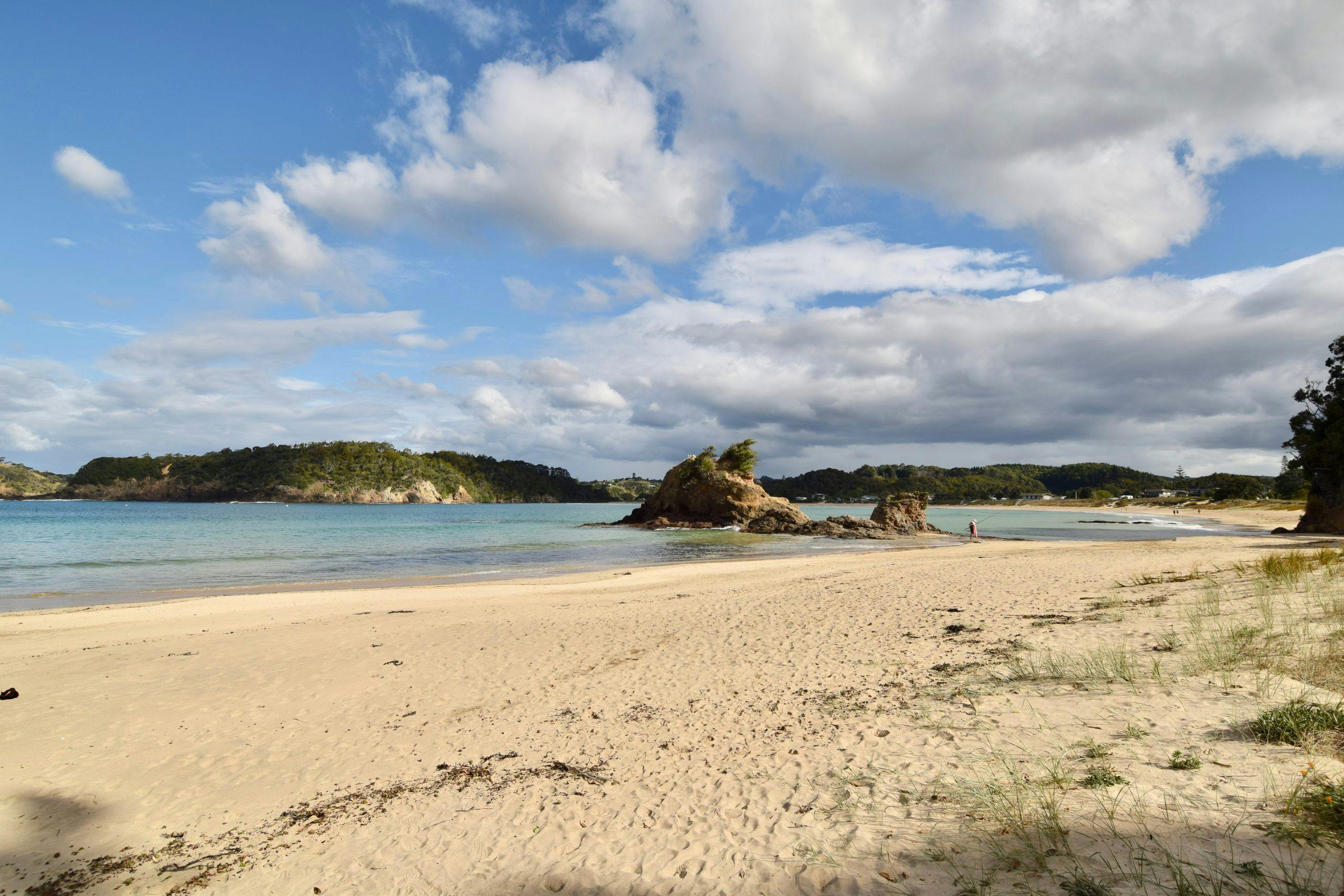A wrap of the biggest stories and best writing about the outdoors from New Zealand and around the world.
A section of the Te Araroa Trail in Northland has been diverted onto a narrow and busy road after a private landowner withdrew access through their property.
The Northern Advocate reports the closure affects an area between Matapōuri and Ngunguru on the Tutukaka Coast. The landowner was undertaking an ‘ecological restoration’ of the land and was concerned trampers would bring in invasive weeds. Efforts to work with the landowner have so far failed.
The track is also popular with day hikers and locals and leads to a DOC reserve where there is an ancient kauri tree, Tane Moana, believed to be the oldest kauri on Northland’s east coast.
Te Araroa chief executive Mark Weatherall said there was no easy detour but the trust was working to find an alternative route, on a less busy road, before October.
Poison the culprit in tramping cold case
NZ Herald has published an interesting excerpt from a book by pathologist Cynric Temple-Camp, which details his investigation into the death of a man found in the bush in the Ruahine Range.
When the man’s body was found he appeared to be physically unharmed and no cause of death could be determined. But years later, Temple-Camp discovered there had been a similar case in that part of the Ruahines in the 1960s, where trampers were poisoned by the tree nettle urtica ferox, also known as ongaonga. The nettle has a toxin called triffydin (named after the murderous plants in the book The Day of the Triffids) which causes paralysis and can be fatal, but leaves no marks on the body. The man is believed to have wandered through a patch of ongaonga and become paralysed and died quickly from the toxin.
Whangarei Heads to become predator-free
Whangarei Heads could become predator-free due to a $27m project to eradicate pests from 60,000ha.
The Northern Advocate reports the government has announced $6m of funding for the project, with additional funding from DOC, local councils and community groups.
The heads are home to a kiwi population, which has grown from about 100 to almost 1000 over the past 20 years, and it also has an enticing selection of tramping tracks.
The fund that buys the backcountry
Stuff has published a feature looking at 25 years of the Natural Heritage Fund, which has bought 341,881ha of private land for the conservation estate over that period.
The public fund buys private land to be protected in perpetuity and has paid landowners a total of $163m, paying on average just $529 per hectare.
A longtime member of the fund said when it was launched some native forests were being turned into woodchips to make high-end paper, and the fund offered an economic alternative for landowners.
Unfortunately, the budget of the fund has been drastically reduced from $10m a year in the early 2000s to about $2m today.
Takahē holding on in Kahurangi
The takahē population on the Heaphy Track is down to about 19 birds, as several birds are suspected to have been killed by predators.
Thirty takahē were released in Kahurangi National Park in 2018 in the first wild release of the birds outside of Fiordland. Stuff has published a story giving an update on the fate of the birds.
DOC says the takahē are still settling in and some birds were predated following the beech mast, when predator numbers boomed. It says it may take several generations for the birds to fully establish in the park.
Climbers caught in avalanches
Four people were caught by avalanches last month and the Mountain Safety Council (MSC) is reminding people to be extra cautious when in the mountains this winter.
Stuff reports two climbers were caught in an avalanche on Mt Alma in Canterbury. While both climbers were able to ride out the avalanche, one of the party suffered a serious leg injury and had to be rescued by helicopter and spent several days in hospital.
Another pair of mountaineers were caught in an avalanche near Arthur’s Pass and also had to be rescued by a helicopter.
New data collected by MSC showed 742 people have been caught in avalanches in New Zealand in the past 20 years. Backcountry skiers were at most risk, but climbers were the most likely to die, accounting for 70 per cent of the 27 avalanche deaths.
Tahr battle goes on
Hunters opposed to DOC’s upcoming tahr cull have won a concession from the High Court, which has found DOC must consult further on its plan to eradicate tahr from national parks.
The Otago Daily Times reports DOC has had to cut its planned cull in half while it consults.
The Tahr Foundation wants DOC to spare bull tahr, which are prized by hunters. However, the National Parks Act and DOC’s tahr management plan call for the herd to be significantly reduced in size and conservation groups argue hunters are unable to keep numbers under control.
Stuff reports hunters are planning a protest this Sunday (July 19), when they plan to drive 52km in convoy from the Lake Pukaki visitor centre to Aoraki/Mt Cook.
Spain launches ‘Middle Earth’ trail
With New Zealand’s borders closed to tourists, one country is trying to fill the void of the ‘Middle Earth’ tramping experience.
Spain has launched a Lord of the Rings inspired track in a bid to reboot tourism as the country recovers from the fallout of Covid-19.
Time Out reports the 122km trail, dubbed ‘The Ring Road’, or El Camino del Anillo, takes about a week to hike and goes through landscapes and villages ‘chosen for their resemblance to places in Tolkien’s books and [Peter] Jackson’s films’.
Some trampers may be happy to see Tolkien fans go elsewhere – Wilderness published a feature in 2016 which looked at how the Lord of the Rings trilogy has coloured people’s understanding of the backcountry, and not always in a positive way.







